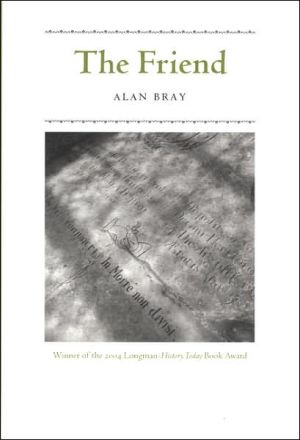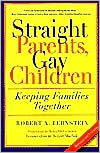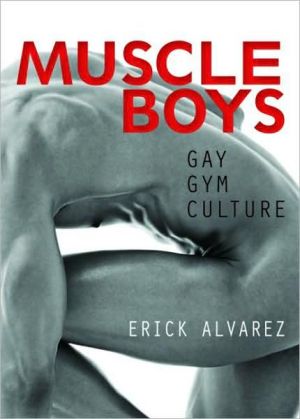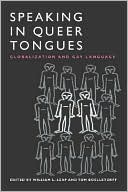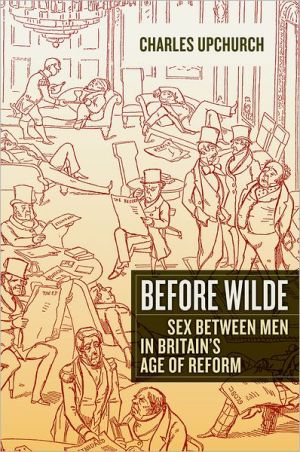The Friend
In the chapel of Christ's College, Cambridge, some twenty years ago, historian Alan Bray made an astonishing discovery: a tomb shared by two men, John Finch and Thomas Baines. The monument featured eloquent imagery dedicated to their friendship: portraits of the two friends linked by a knotted cloth. And Bray would soon learn that Finch commonly described his friendship with Baines as a connubium or marriage.\ There was a time, as made clear by this monument, when the English church not only...
Search in google:
In the chapel of Christ's College, Cambridge, some twenty years ago, historian Alan Bray made an astonishing discovery: a tomb shared by two men, John Finch and Thomas Baines. The monument featured eloquent imagery dedicated to their friendship: portraits of the two friends linked by a knotted cloth. And Bray would soon learn that Finch commonly described his friendship with Baines as a connubium or marriage. There was a time, as made clear by this monument, when the English church not only revered such relations between men, but also blessed them. Taking this remarkable idea as its cue, The Friend explores the long and storied relationship between friendship and the traditional family of the church in England. This magisterial work extends from the year 1000, when Europe acquired a shape that became its enduring form, and pursues its account up to the eighteenth and nineteenth centuries. Spanning a vast array of fascinating examples, which range from memorial plaques and burial brasses to religious rites and theological imagery to classic works of philosophy and English literature, Bray shows how public uses of private affection were very common in premodern times. He debunks the now-familiar readings of friendship by historians of sexuality who project homoerotic desires onto their subjects when there were none. And perhaps most notably, he evaluates how the ethics of friendship have evolved over the centuries, from traditional emphases on loyalty to the Kantian idea of moral benevolence to the more private and sexualized idea of friendship that emerged during the modern era.Finely nuanced and elegantly conceived, The Friend is a book rich in suggestive propositions as well as eye-opening details. It will be essential reading for anyone interested in the history of England and the importance of friendship in everyday life.
The Friend \ \ By ALAN BRAY \ The University of Chicago Press \ Copyright © 2003 The University of Chicago Press\ All right reserved.\ ISBN: 978-0-226-07180-0 \ \ \ \ \ Chapter One \ Wedded Brother \ Then David made this lament ... "O Jonathan, in your death I am stricken, I am desolate for you, Jonathan my brother."\ In 1913 the Turkish workmen who were restoring the Arap Camii, the Mosque of the Arabs, in Istanbul broke through its wooden floor and uncovered below it paving and tombstones. The startled workmen were gazing at the paving of what five centuries before had been the church of the Dominican friars in the bustling village of Galata, across the Golden Horn, within sight of the towers and palaces of ancient Byzantium. One of the tombstones they uncovered that day can now be seen in the archaeological museum in modern Istanbul and sets out for me in graphic form the question that I have sought to pursue and answer in this book (see fig. 1).\ The tombstone is more than seven feet long and is made of gray white marble streaked with blue and pink veins. Part of the inscription at the top of the monument, once identifying it, was obliterated probably during the reconstruction of the church as a mosque; but the opening words-"HIC JACET" [Here lies]-are still clearly visible and announce that the monument once lay horizontal above the tomb or sarcophagus below it, in what must have been a prominent setting in the crowded church. A small card placed by the museum beside the tombstone identifies it for the visitor as that of two English knights who died near Galata at the end of the fourteenth century, and below the inscription are depicted the shields carrying their armorial bearings, together with their helmets and the extravagant crests and mantlings that accompany them.\ The design on the tombstone is likely to make even the casual visitor pause, for in the engraver's arrangement the helmets of the two men seem as if about to kiss. One might conclude that this is a trick of their appearance to a modern viewer-for it is at eye level that the visors meet-were it not for the arrangement of the shields below them. A heraldic device is not a realistic depiction; it is a kind of code (like a modern road sign), but here that code is transgressed by the shields below; for the inclination of the shield on the viewer's left is reversed and heraldically incorrect. There is, however, a singular precedent for this (and from the same period) in the stalls of the Knights of the Garter in St. George's Chapel, Windsor, where the heraldic shields on one side of the choir were inclined incorrectly in the same direction as the shield on the left on this tombstone, so that all the shields above the stalls corresponded to the posture of the knights who had once sat below them, as they had turned to gaze toward the high altar. The tilting of the shields toward each other on the tombstone at Galata would then correspond, by the same device, to the bodies of the two knights that were laid below-turned not toward the altar but toward each other.\ The presentation of the two helmets in profile corresponds here to the stylized depiction of a kiss, and the arrangement of the two overlapping shields below to that of an embrace. Fourteenth-century culture recognized more than one kind of kiss, of ascending significance: a touching of the shoulders with an inclination of the heads, a kiss on the cheek, and a kiss on the mouth. The last, which brings the eyes into contact and exchanges the breath and saliva, was the most momentous and is evidently the kiss indicated here. Although the precise meaning that gesture held in the fourteenth century will probably escape a modern viewer, it is a sufficiently universal symbol to hold the visitor's attention. The modern visitor would be correspondingly more surprised, even incredulous, if he or she could then read the coats of arms within these shields through the eyes of the inhabitants of the fourteenth century, who (as has been said) could read a coat of arms for the most part more easily than they could a letter. The arrangement given to the arms of these two men in the church of the Dominican friars is that of a married couple.\ The two shields are divided in half, left side from the right, and in each half a whole coat of arms is shown. In this arrangement the left side of the shield (from the viewpoint of the viewer)-the dexter half-is the more honorable and by convention bore the arms of the husband, while the right, or sinister, half bore those of the wife. The technical term is "impalement," and by the end of the fourteenth century it was an established device for presenting the arms of a married couple. The impaled arms of Thomas, Lord Camoys, and his wife Elizabeth Mortimer on their monumental brass in the church in the Sussex village of Trotton are an example from the same period, which one can set by the impaled arms from the church in Galata.\ In modern terms, the apparently marital imagery of the tombstone is inexplicable, although the context for its imagery of an embrace and a kiss is initially easier to explain than its imagery of a marriage. The kiss depicted here points to a ritual act that would have been familiar in any Latin church in the fourteenth century, including that of the Dominican friars in Galata. After the priest's consecration of the elements in the mass, he would take the peace of God as it were from the altar and pass it to the deacon in the form of a "kiss of peace"-the osculum pacis-from whom it would pass among those present, each receiving God's peace from their neighbors and, in return, passing it on to others. The liturgical reference and the ecclesiastical setting of the tomb suggest an intriguing question, however improbable it may sound in the twentieth century, that might go some way toward explaining its marital imagery. Could what I am seeing, at the conclusion of the friendship that this tombstone marks so publicly, be the counterpart in stone to a liturgical act that marked its beginning?\ Despite the setting in Byzantium, this tombstone is not a counterpart to the Greek liturgy of the adelphopoiesis (literally a rite "for the making of brothers" or "sisters"). The inscription on the tombstone is not in Greek but in Latin, and the Dominican church in Galata was a Latin church. Galata lay outside Byzantium and was an enclave for foreigners, principally the Genoese: a cutting from the West planted by the Bosporus. If the context for the iconography of this tomb is a liturgical one-and if that goes some way toward explaining its marital imagery-then that context is distinctively Western.\ These possibilities are strengthened by a student studying heraldry in the 1450s called Richard Strangways, whose notes attribute to two knights an armorial arrangement of precisely the kind shown on this tombstone: on the grounds that they were "sworn" brothers.\ There were ii knights, and their lineage is yet in Spain, and there fell so great love betwixt them that they were sworn brothers, and that one of them bore his arms with a bend; and for the great love that his sworn brother had to him he forsook his own arms and said he would bear his brother's arms and took the same arms, saying that he laid the bend up on the left side: and heralds considered the great love betwixt them and granted thereto.\ The word "sworn" implies a ritual of some kind; that this was the essence of the matter is indicated nicely by the addition Strangways made to his note. As one can see from the manuscript in the British Library, when he came to the term for the second time, he nodded and first wrote only "brothyr," then carefully added to it the word "sworn," above the line-an addition that emphasizes that what made the impalement appropriate was not merely that they were brothers but that an oath had made them such.\ Although the word "sworn" implies a ritual of some kind, it does not necessarily imply a ritual act in church; but two pieces of evidence suggest that that was indeed what Strangways had in mind. One is a passage in the romance of Amys and Amylion, the story of two sworn brothers that was still popular in Strangways's fifteenth century. Virtually every European language has had a version of the tale (including English), but Strangways's culture also knew a popular Latin version that presented the two friends as Christian saints and was evidently written by a churchman. In the course of this version, the king's steward Ardericus seeks a sworn brother of his own and does so with the injunction that the oath of fidelity be sworn "super sanctorum reliquias" [on relics of the saints]. The point is that the place where one might expect to find the relics of saints would be at the altar of a church.\ The second piece of evidence that a church was thought to be an appropriate setting for such a ritual is the implication of a compact made in France a few years before Strangways wrote his note, between two English esquires in the army of Henry V, called Nicholas Molyneux and John Winter. The document confirming the compact between them employs terms that are close parallels to those that were used in Strangways's notes. Their compact was one that made them sworn "freres darmes" [brothers in arms], and it records with careful and telling precision that their compact was made on 12 July 1421 in the church of St. Martin at Harfleur: "en leglise de Saint Martin de Harefleu." Is the context for the tomb monument in the church of the Dominican friars at Galata a similar ritual oath in church? The ritual kiss depicted on their tomb figures runs like a thread through the stories of sworn brothers like Amys and Amylion. The promises of fidelity that Amys and Amylion exchange are preceded by the public (and binding) exchange of the kiss before witnesses. A ritual kiss also marks the sworn brotherhood of Guy and his sworn brother Tirry in the romance Guy of Warwick; and when the chronicler Henry of Huntingdon recounted the ritual brotherhood of the English king Edmund Ironside and Cnut in 1016, he simply says, "osculum pacis invicem datum est" [they exchanged the kiss of peace].\ Who then were these two men who were laid together by their friends in the same tomb in the church at Galata for the long last sleep of death? The inscription identifying the tomb is divided into two fields by a vertical line, which presumably corresponds to the division between the arms on the shields below. Only fragments of the inscription remain, and the surname in the field on the right is missing; but here is the transcription made by the historian of the Galata inscriptions, Siegrid Düll, with the abbreviations expanded.\ HIC IACET HIC JACET NOBILIS MILES NOBILIS MILES DOMIN VS GVLIELMVS DOMINVS IOHANNES C NEVILE ANGLICUS -ANGL QUI OBIIT M CCC IC-QVI OBIIT LXXXXI DIE X M CCC LXXXXI OCTOBRIS DIE VI OCTOBRIS\ [Here lies [Here lies the noble English knight the noble English knight Sir William Neville, Sir John C-, who died on 10 October 1391.] who died on 6 October 1391.]\ The inscription on the left corresponds with the arms on the dexter half of the shield, for the diagonal cross they display (a cross like that of St. Andrew-the saltire) composed the arms of one of the greatest families in England: the Nevilles of Raby in County Durham. The fleur-de-lis that appears at the center of the cross is the mark of cadency that indicates that the arms are those of a younger son. Only one such figure fits these details: William Neville, a younger son of Ralph Neville, lord of Raby. The completion of the name in the field on the right can be made from an entry for 1391 in the chronicle compiled in the fourteenth century by the monks of Westminster Abbey. As one does so, this stone turns back into the warm and breathing life of the fourteenth century, for the story it tells is that William Neville's friend was called John Clanvowe, and that William Neville died of grief for him.\ Item xvij. die Octobris dominus Johannes Clanvowe miles egregius in quodam vico juxta Constantinopolim in Grecia diem clausit extremum: quam ob causam dominus Willelmus Nevyle ejus comes in itinere, quem non minus [quam] se ipsum diligebat, inconsolabiliter dolens numquam postea sumpsit cibum, unde transactis duobus diebus sequentibus in eodem vico lamentabiliter expiravit. Erant isti milites inter Anglicos famosi viri nobiles et strenui ac eciam de genere claro producti.\ [It was also on 17 October that in a village near Constantinople in Greece the life of Sir John Clanvowe, a distinguished knight, came to its close, causing to his companion on the march, Sir William Neville, for whom his love was no less than for himself, such inconsolable sorrow that he never took food again and two days afterward breathed his last, greatly mourned, in the same village. These two knights were men of high repute among the English, gentlemen of mettle and descended from illustrious families.]\ "Companion on the march" is the translation of "comes in itinere" offered by the two modern editors of the Westminster Chronicle, L. C. Hector and Barbara Harvey, and this description of the two men corresponds to the "freres darmes" of Nicholas Molyneux and John Winter's covenant and the formal imagery on the tombstone in Galata. It suggests something more than a mere description of William Neville as John Clanvowe's "companion on the journey," as the phrase might have been translated. That accidental sense would miss the formality of the Ciceronian counterpart, of the true friend as a second self, that follows. The "verus amicus" [real friend] of Cicero's De Amicitia, "est tamquam alter idem" [is, as it were, another self]. More mundanely, the chronicler's grammar makes the same point. The chronicler does not employ the partitive genitive-John Clanvowe is not "one of his companions"-and there were surely other companions with them on such a journey: he is his "comes in itinere." The implication of the carefully formal phrase is that the monks at Westminster knew William Neville and John Clanvowe and the nature of the bond between them. The strength of the term explains something of William Neville's grief, but it is also a further hint of the formal and public context for their friendship to which the imagery of their tomb monument insistently points.\ The Westminster Chronicle is a strong and reliable source: the monks of Westminster were at the hub of power and well informed; and the editors of the chronicle suggest that that otherwise curious phrase "inter Anglicos" [among the English] is attributable to the passage's being taken, in part at least, verbatim from a contemporary newsletter. The surviving tomb monument confirms their death a few days apart in October 1391, and the difference in the precise dates between the tomb monument and the chronicle (or the newsletter on which it drew) were most probably due to the time that elapsed before the newsletter was written (or the tomb constructed). The evidence of the Westminster Chronicle and the tangible evidence of the remaining tombstone tell alike the same story: that William Neville died of inconsolable grief a few days after the death of his friend John Clanvowe.\ (Continues...)\ \ \ \ \ Excerpted from The Friend by ALAN BRAY Copyright © 2003 by The University of Chicago Press. Excerpted by permission.\ All rights reserved. No part of this excerpt may be reproduced or reprinted without permission in writing from the publisher.\ Excerpts are provided by Dial-A-Book Inc. solely for the personal use of visitors to this web site. \ \
Editor's Note Introduction1 Wedded Brother2 Friend to Sir Philip Sidney3 Families and Friends4 The Body of the Friend5 Friends and Enemies6 Friendship and Modernity7 Coda: The Lickey Hills, August 1890Afterword: Historians and Friendship Notes List of Works Cited Index
\ AlbionMagisterial. . . . This intricate book—so suggestive and so valuably different from many 'popular' treatments of the history of intimacy—offers a promising way forward for historians of sexuality and the family.\ — H.G. Cocks\ \ \ \ \ \ American Historical ReviewBray's book. . . both radically shifts our understanding of premodernity and points the way toward a more humane and useable postmodernity. . . . It tells a story that provides an alternative to the frequently false intimacy found in sex, a story that will speak powerfully to a new generation for whom the mechanics of sex (both heterosexual and homosexual) holds few mysteries, but for whom friendship is an uncharted territory.\ — Tim Hitchcock\ \ \ \ London Review of BooksBray's loving coupledom is something with a proper historical backbone, with substance and form, something you can trace over time, visible and archeologicable. . . . Bray made a great contribution in helping to bring this long history to light . . . not just because his thoughtfulness and subtlety show what can (and cannot) be done with those materials, but because of his extraordinary ability to question the questions we ask of the past and to rethink the issues in a way that does less violence to the traces the friends have left behind.\ — James Davidson\ \ \ \ \ \ BBC History MagazineDaring and important. . . It deserves to be read. Its implications stretch beyond the history of friendship, and challenge our very understanding of kinship in premodern Europe.\ — Alan Stewart\ \ \ \ \ \ History TodayIt is precisely his painstaking quest for objectivity — his refusal to conflate friendship with what we today call homosexuality — that gives this book such contemporary relevance, and which ultimately makes it (as Bray puts it) 'a book about ethics'. It should be read not only as an exemplary piece of historical detective work and source criticism. By seeking to restore a space for friendship as a spiritual bond of public significance, this book also provides an indispensable frame of reference for current debates spiralling from the increasingly fraught relationship between homosexuality and Christianity." — Alexandra Shepard, History Today\ — Alexandra Shepard\ \ \ \ \ \ Studies in English Literature 1500-1900Bray offers a fascinating history of male same-sex friendship, from the twelfth through the nineteenth century.\ — Achsah Guibbory\ \ \ \ \ \ SpeculumMedievalists should read this book for its content, its method, and its revisionary view of a Middle Ages extending . . . . far beyond the Lockean 'civil society' that supposedly buried it. . . . The Friend is beautifully and engagingly written: the reader is treated as peer and confidant, embarked on a rather eccentric but wholly absorbing itinerary of church combing and tomb peering.”\ — David Wallace\ \ \ \ \ \ Journal of HomosexualityThe Friend is a complex, multi-layered book that transports the reader through five or six centuries of religious rituals, tomb markers, letters between friends, manuscripts, and historical events. . . . It is also like a detective story in which the author and reader explore together thje mysteries hidden beneath and behind the tombstones and brass plaques. . . . But have no mistake this is a scholarly work with some important insights about the meaning of friendship in English culture.\ — Peter M. Nardi\ \ \ \ \ \ ComitatusA masterful piece of interdisciplinary scholarship. . . . Anyone who is interested in the topic of friendship will find it worthwhile, as the book raises real questions about the very essence of friendship in the modern world.\ — Benjamin de Lee\ \ \ \ \ \ Albion"Magisterial. . . . This intricate book—so suggestive and so valuably different from many 'popular' treatments of the history of intimacy—offers a promising way forward for historians of sexuality and the family."\ \ \ \ \ \ American Historical Review"Bray's book. . . both radically shifts our understanding of premodernity and points the way toward a more humane and useable postmodernity. . . . It tells a story that provides an alternative to the frequently false intimacy found in sex, a story that will speak powerfully to a new generation for whom the mechanics of sex (both heterosexual and homosexual) holds few mysteries, but for whom friendship is an uncharted territory."\ \ \ \ \ \ London Review of Books"Bray's loving coupledom is something with a proper historical backbone, with substance and form, something you can trace over time, visible and archeologicable. . . . Bray made a great contribution in helping to bring this long history to light . . . not just because his thoughtfulness and subtlety show what can (and cannot) be done with those materials, but because of his extraordinary ability to question the questions we ask of the past and to rethink the issues in a way that does less violence to the traces the friends have left behind."\ \ \ \ \ \ BBC History Magazine"Daring and important. . . It deserves to be read. Its implications stretch beyond the history of friendship, and challenge our very understanding of kinship in premodern Europe."\ \ \ \ \ \ History Today"It is precisely his painstaking quest for objectivity -- his refusal to conflate friendship with what we today call homosexuality -- that gives this book such contemporary relevance, and which ultimately makes it (as Bray puts it) 'a book about ethics'. It should be read not only as an exemplary piece of historical detective work and source criticism. By seeking to restore a space for friendship as a spiritual bond of public significance, this book also provides an indispensable frame of reference for current debates spiralling from the increasingly fraught relationship between homosexuality and Christianity." -- Alexandra Shepard, History Today\ \ \ \ \ \ Studies in English Literature 1500-1900"Bray offers a fascinating history of male same-sex friendship, from the twelfth through the nineteenth century."\ \ \ \ \ \ Speculum"Medievalists should read this book for its content, its method, and its revisionary view of a Middle Ages extending . . . . far beyond the Lockean 'civil society' that supposedly buried it. . . . The Friend is beautifully and engagingly written: the reader is treated as peer and confidant, embarked on a rather eccentric but wholly absorbing itinerary of church combing and tomb peering.”\ \ \ \ \ \ Journal of Homosexuality"The Friend is a complex, multi-layered book that transports the reader through five or six centuries of religious rituals, tomb markers, letters between friends, manuscripts, and historical events. . . . It is also like a detective story in which the author and reader explore together thje mysteries hidden beneath and behind the tombstones and brass plaques. . . . But have no mistake this is a scholarly work with some important insights about the meaning of friendship in English culture."\ \ \ \ \ \ Comitatus"A masterful piece of interdisciplinary scholarship. . . . Anyone who is interested in the topic of friendship will find it worthwhile, as the book raises real questions about the very essence of friendship in the modern world."\ \ \
